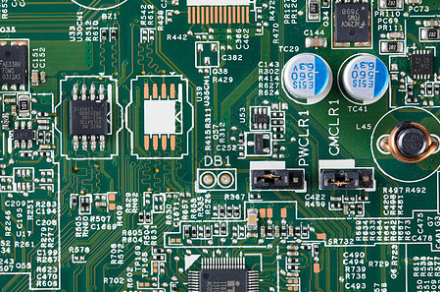There is no shortcut to learning PCB design. You must first lay a solid foundation and learn and accumulate step by step.
PCB common terms
Net List
A data sheet that represents the connection relationship between PCB component pins, which describes all electrical connections on the PCB.
Basic Grid
Refers to the vertical and horizontal grid where the conductor layout of the circuit board is designed. In the early days, the grid spacing was 100 mil. At present, due to the prevalence of fine lines and dense lines, the basic grid spacing has been reduced to 50 mils.
Blind Via Hole
Refers to the complex multi-layer board, because part of the vias only need a certain layer of interconnection, so they are deliberately incompletely drilled. If one of the holes is connected to the ring of the outer board, it is like a cup The special hole in the dead end is called "Blind Hole".
Buried Via Hole
Refers to the local vias of the multilayer board. When they are buried between the inner layers of the multilayer board, they become "internal vias" and are not "connected" with the outer board, which are called buried vias or buried vias for short.

Through Via
This kind of hole penetrates the entire circuit board and can be used for internal interconnection or as a component installation positioning hole. Because the through hole is easier to implement in the process and the cost is lower, most of the printed circuit boards use it instead of the other two types of through holes. Generally speaking, through holes, unless otherwise specified, are considered as through holes.
Fanout
In the PCB layout process, Fanout refers to fan-out punching. That is, short wires are drawn from the pad to punch holes, which are divided into automatic and manual.
Fine Line
According to the current technical level, the four lines between holes or those with an average line width of 5-6 mils or less are called thin lines.
Current-Carrying Capability
Refers to the wires on the board that can continuously pass the maximum current intensity (amperes) under specified conditions without causing degradation of the electrical and mechanical properties of the circuit board (Degradation). The amperage of the maximum current is The "current carrying capacity" of the line.
Print Package
A component assembly pattern composed of multiple pads and surface silk screens made on the printed circuit board according to the actual size of the component (projection) and pin specifications.
Center-to-Center Spacing
Refers to the Nominal Distance (Nominal Distance) from the center to the center of any two conductors on the board. If the conductors arranged in a row have the same width and spacing (such as the arrangement of gold fingers), then this "center-to-center spacing" is also called pitch.
Conductor Spacing
Refers to the span of a certain conductor on the circuit board surface from its edge to the edge of another nearest conductor, which is called the conductor spacing, or colloquially called the spacing.
Clearance
The minimum distance to prevent short circuits between signals is an important setting parameter for PCB wiring.
Crosshatching
For some large-area conductor areas on the circuit board surface, in order to get better adhesion to the board surface and the green paint, the copper surface of the sensing part is often turned away, leaving many cross lines that cross vertically and horizontally. Like the structure of a tennis racket, this will resolve the risk of floating away from a large area of copper foil due to thermal expansion. The etched cross pattern is called Crosshatch, and this improved method is called Crosshatching.
Silkscreen Layers
A PCB board can have up to 2 silk screen layers, namely the top silk screen layer (Top Overlay) and the bottom silk screen layer (Bottom Overlay), generally white, mainly used to place printed information, such as the outline and labeling of components, each A kind of annotation characters, etc., to facilitate the soldering of PCB components and circuit inspection.
Mechanical Layers
It is generally used to place indicative information about board manufacturing and assembly methods, such as PCB dimensions, size markings, data materials, via information, assembly instructions and other information. This information varies depending on the requirements of the design company or PCB manufacturer.
Ground plane(or Earth Plane)
A type of board surface that belongs to the inner layer of a multilayer board. Usually, a circuit layer of a multilayer board needs to be matched with a large copper ground layer to serve as the grounding, shielding, and heat dissipation of the common circuit of many parts. Heatsinking).